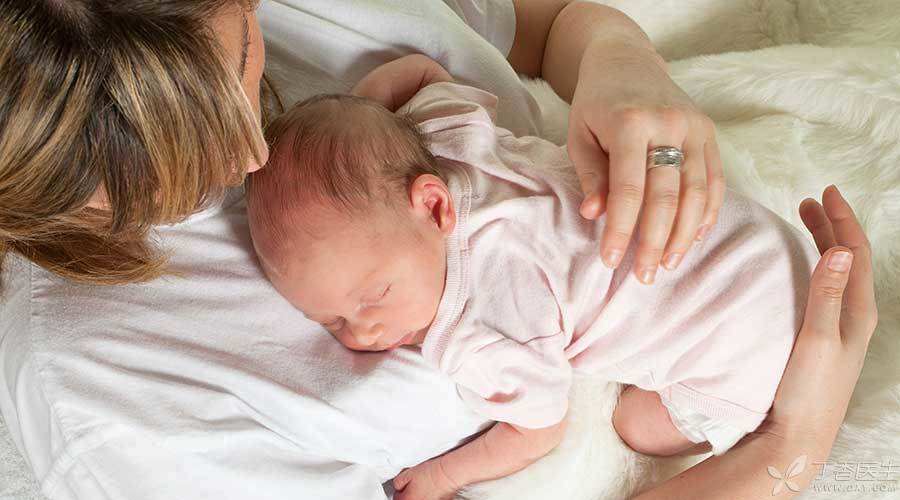
My friend called me and told me in a hurry that her wife had a high fever after giving birth and asked me to take some what antipyretic.
Hearing this, I felt that the problem was not as simple as fever reduction, so I asked him to take his wife to the hospital immediately.
Postpartum high fever is probably puerperal infection, which was also called [puerperal fever] in the past. In ancient times, many women passed the death of giving birth to children, but fell on the disease.
Until now, puerperal infection is still one of the major causes of maternal death.
The occurrence of puerperal infection is related to the physical state of women after delivery: normal women’s vaginal environment has certain defense capability against various pathogenic factors, but due to various reasons such as physical exertion and hemorrhage during delivery, the original balance of reproductive tract is met, allowing pathogens to invade, thus causing infection.
Symptoms worthy of vigilance
Puerperal infection has three major symptoms. Now the parturient is usually discharged from the hospital two or three days after delivery. At home, we must pay attention to observe whether there are these symptoms. Once we suspect puerperal infection, we must go to the hospital in time.
1. Fever
In the first few days after delivery, mild temperature rise is normal. However, if high fever (over 38 ℃) suddenly occurs after 2-3 days of low fever, the possibility of infection should be considered.
Step 2: Pain
If caesarean section parturients suffer from severe abdominal incision pain, and if normal delivery parturients suffer from perineal swelling and pain, infection may occur in these parts.
3. Abnormal lochia
If lochia becomes lighter and then deepens, or lochia smells bad, you must go to the hospital in time.
At this time, don’t rinse with lotion at will, because it may affect the doctor’s judgment on the disease condition.
Although it sounds terrible, if you do a good job in prevention, you won’t worry.
Puerperal Infection, Emphasis on Prevention
1. Pay attention to hygiene! Pay attention to hygiene! Pay attention to hygiene!
Say important things three times.
First of all, we should pay attention to the hygiene during pregnancy. To be on the safe side, avoid sex and bath within 2 months before delivery and 42 days after delivery.
Of course, as long as the doctor does not explicitly prohibit it, the whole pregnancy sex life is safe.
Postpartum hygiene is more important. Although the hygiene conditions are much better now than in the past, there are still many bad habits of confinement in many places. What cannot take a bath and must cover themselves in bed. It is undesirable.
Think about it, sweat and lochia in bed constitute a powerful breeding ground for bacteria, which is hot and humid. It is simply a paradise for bacteria and will greatly increase the risk of puerperal infection.
These bad habits are not a symbol of the status of the parturient, but a reminder of the death of the parturient.
2. Timely treatment of pregnancy complications
For example, anemia during pregnancy, vaginal inflammation, urinary tract infection, etc., should be treated in time, otherwise, the risk of postpartum infection will be increased.
If abnormalities are found during pregnancy, they must be treated in time. Don’t think that drugs will affect the fetus, so you don’t take drugs and carry them hard.
3. Strengthen nutrition and exercise properly.
Postpartum mothers can consider doing some pelvic floor rehabilitation training when their bodies permit, laying a good foundation for future physical exercises, enhancing physical fitness, improving immunity, preventing pelvic floor muscle relaxation, preventing urine leakage, and, uh, beneficial to sexual life.
4. Timely prenatal inspection
Only by carrying out prenatal and postpartum examinations on time can doctors be helped to find abnormalities in the early stage and deal with the disease in time.
Can I still nurse?
The current clinical guidelines suggest that if the fever exceeds 38 ℃, feeding should be stopped. Since the milk temperature is the same as the body temperature, if the baby inhales hot breast milk, diarrhea may be caused.
In addition, some therapeutic drugs may also affect breastfeeding.
The specific time to resume nursing needs to be judged by doctors according to the treatment.
